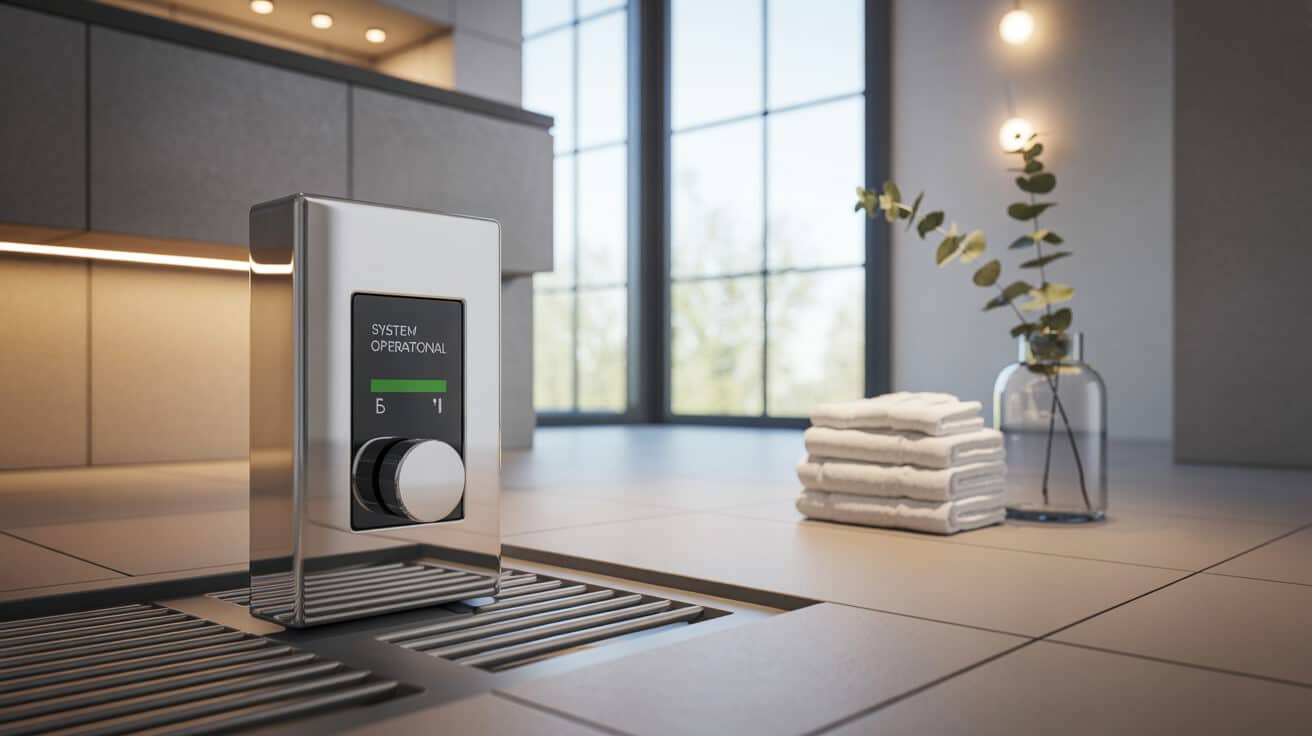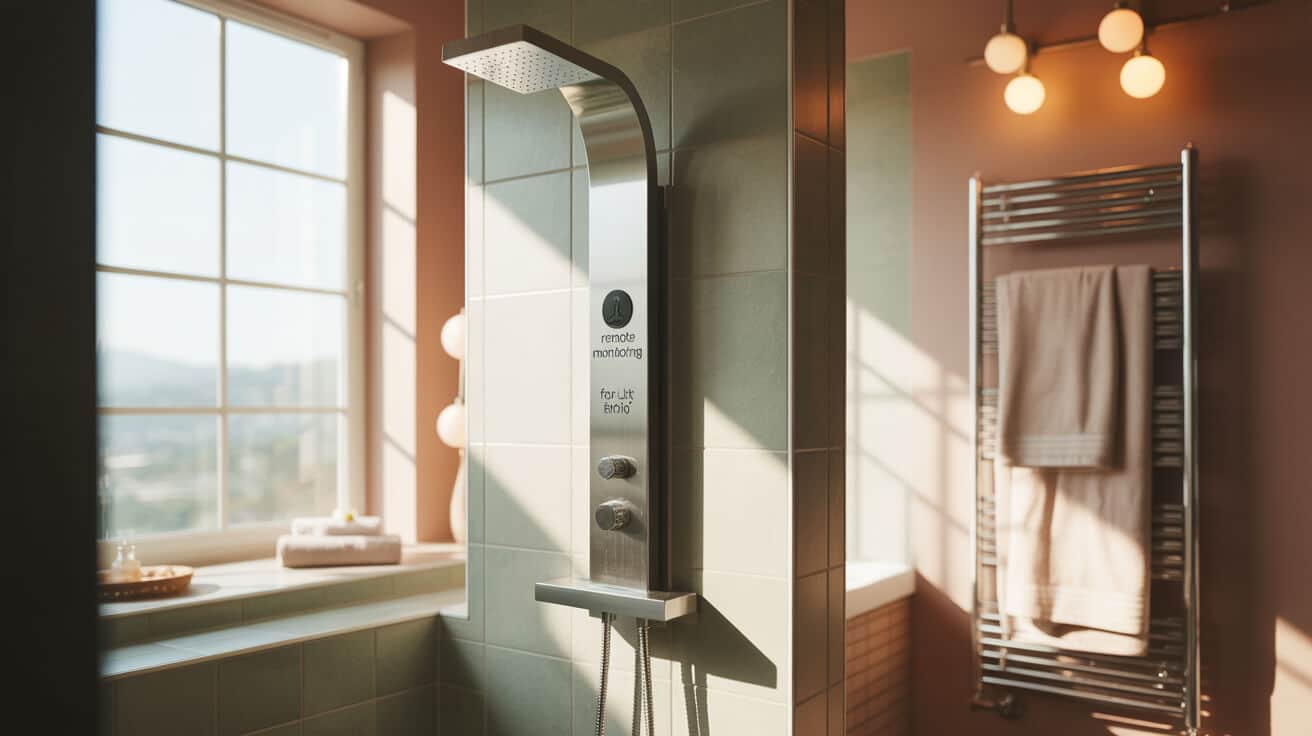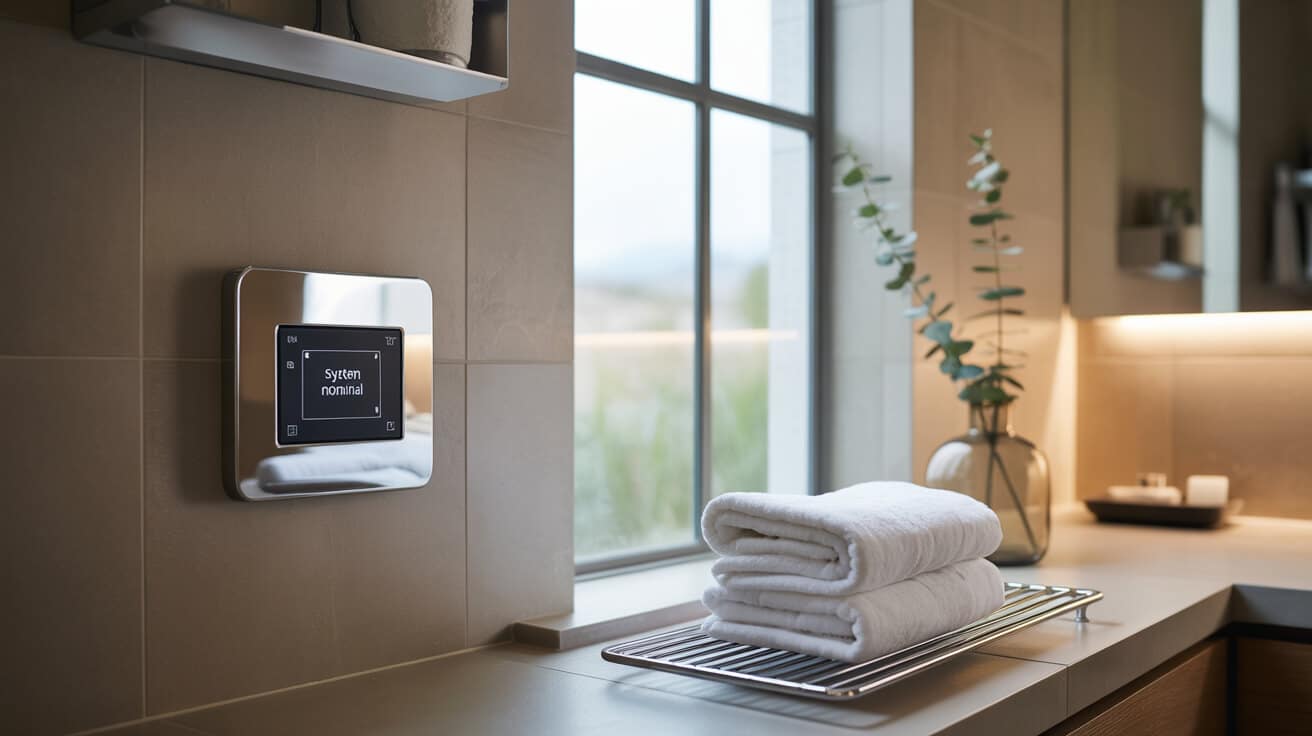Remote monitoring offers an evolution from reactive maintenance toward proactive safeguarding of domestic and commercial hot water infrastructure. By connecting sensor networks to intelligent dashboards, you are empowered to anticipate—rather than merely react to—conditions that threaten safety, comfort, or regulatory standing. When a remote monitoring protocol integrates with digital compliance records and responsive service routines, both you and your clients receive assurance that problems are addressed long before they escalate, underpinning trust and long-term value.
Etymology or Name Origin
The nomenclature “remote fault monitoring” combines the notion of observation at a distance (“remote”) with the systematic detection of abnormal functioning (“fault monitoring”). Initially rooted in industrial instrumentation, these terms have become embedded in the lexicon of building services following the convergence of traditional trades with digital technology. Within property and heating management, the phrase signals a shift toward automation and preemptive care, reflecting the increasingly interconnected responsibilities between service providers, regulators, and end-users.
Overview / Context
The adoption of remote monitoring mirrors fundamental changes in property management, insurance accountability, and client expectations. In domestic settings, your family relies on a steady supply of safe hot water, yet the complexity of modern systems renders traditional, hands-on oversight impractical and unreliable. For landlords and facilities managers, remote protocols provide scale—dozens or hundreds of disparate water heating units can be observed centrally, with incidents flagged in real-time.
External forces—such as regulatory tightening on unvented systems, mandatory compliance logs, smarter insurance underwriting, and the drive for energy cost optimization—expand the adoption. These societal shifts blur the lines between technical oversight and customer peace of mind. When your organisation implements remote monitoring, the ambient threat of unseen leaks, scaling, or electrical failure is transformed into a manageable and auditable process, turning hidden risk into visible, actionable intelligence.
History
Origins
Manual inspection and resident feedback formed the backbone of hot water maintenance for decades. Faults, leaks, or pressure events typically came to attention only after inconvenience or damage, often causing avoidable distress, loss, or regulatory penalties. Your experience during this era would have relied on reactive callouts, sometimes with insufficient information for swift resolution.
Industrial Emergence
By the late twentieth century, critical sites with high-value equipment (hospitals, industrial plants, hotels) employed basic alarm circuits to monitor temperature and pressure. Industrial programmable logic controllers (PLCs) brought a degree of automation and standardisation, paving the way for broader adoption. However, these systems demanded high investment and lacked accessibility for everyday property managers.
Contemporary Evolution
The confluence of affordable sensor technology, cloud computing, and mobile communication set the stage for widespread, scalable remote monitoring. Leading service providers—including Plumbers 4U—embraced integrated monitoring to offer responsive, documentation-rich services. As regulatory scrutiny and insurance requirements mounted, digital logs and compliance dashboards became entrenched, transforming not only workflows but also the psychological contracts between residents, owners, and contractors.

Concept / Description
Remote fault monitoring leverages arrays of strategically placed sensors—measuring temperature, pressure, flow, and electrical integrity—to form a persistent picture of hot water system health. At the edge, control modules process sensor signals, performing initial diagnostics against manufacturer or regulatory thresholds. Data streams are relayed via wired or wireless links to a secure server or dedicated dashboard.
Abnormalities—such as temperature fluctuations, pressure spikes, persistent low flow, or electronic anomalies—trigger alerts that cascade through logic layers. For your company’s maintenance team or chosen service provider, these alerts can be prioritised, routed, and escalated to the appropriate response personnel. Integration with compliance and maintenance logs ensures that each event is contextualised within the history of your building’s assets, supporting warranty claims and regulatory reviews.
System Architecture
- Sensor Layer: Temperature, pressure, and flow sensors; inline electrical probes; external leak detectors.
- Data Acquisition: Local data loggers, control modules, relays.
- Communication Framework: Wired (Ethernet), wireless (WiFi, LoRaWAN, cellular).
- Analytics & Diagnostics: Threshold-based and algorithmic anomaly detection, historical trend review.
- Notification & Escalation: Automated SMS, app, and email notifications to designated users.
- Integration: Digital service books, compliance dashboards, asset management platforms.
Functionality / Purpose / Applications
Homeowner Use Cases
Your home benefits from peace of mind—trusted systems that discreetly monitor for leaks, overheating, and component wear. Free from the anxiety and cost of surprise failures, your household enjoys improved energy efficiency and a more predictable service schedule. Apps and web portals inform you (or your designated maintenance contact) of faults before you notice cold taps or water on the floor.
Landlords and Letting Agents
Remote monitoring enables you to orchestrate proactive care across an entire property portfolio—minimising tenant complaints, streamlining insurance paperwork, and automating documentation for compliance audits. When your compliance deadlines approach, digital logs from Plumbers 4U or a similar trusted service provider are readily exported and submitted.
Facilities and Commercial Real Estate
In high-traffic environments—offices, hotels, public housing—your facilities management team relies on real-time overviews, predictive maintenance planning, and integration with building management systems (BMS). Automated alerts can be programmed for incident-specific escalation, optimising response and reducing unplanned shutdowns.
Social and Vulnerable Housing
For property managers serving the elderly or vulnerable tenants, the ability to monitor, document, and respond to faults remotely bridges crucial support gaps. Early leak detection prevents water damage; automated shutdowns can be safely performed before hazards develop.
Classifications / Types / Variants
System Installation
- Retrofit Platforms: After-market sensor arrays and control modules designed to adapt to a wide variety of existing cylinders, combi-boilers, and pipe networks. Favoured when your organisation manages legacy assets with varying age and make.
- Integrated Manufacturer Solutions: Vendor-supplied systems built into new units, enabling tightly-coupled diagnostics and warranty coverage.
Monitoring Intelligence
- Passive Logging Systems: Data are collected and available for manual review or routine analysis; interventions remain at the discretion of the user.
- Active and Automated Systems: Algorithms not only detect faults, but can trigger pre-agreed actions—temporary shutdowns, self-bleeding routines, or direct engineer dispatch—reducing intervention time for you and your stakeholders.
Notification and Control
- Local-Only: Alarms and status lights are physically present on equipment or a local panel.
- Remote-Enabled: Status and alarms are pushed to web interfaces, mobile devices, or centralised dashboards, allowing for multi-building management on the go.
Vendor Typology
- Brand-Agnostic: Aftermarket solutions compatible with diversified portfolios and mixed-vendor estates.
- Single-Supplier: Fully integrated, leveraging deep manufacturer insight, usually with automatic firmware updates and enhanced support.
Systems / Tools / Methodologies
Primary Technology Components
- Multi-Point Sensors: Pressure transducers, digital thermometers, inline water metres, moisture/condensate sensors.
- Diagnostics & Analytics Modules: Embedded microprocessors or cloud services that ingest, sort, and interpret system data using both rules and statistical methods.
- Notifications: Multi-channel alerts (SMS, email, push notifications) can be tailored to the recipient’s preferences and operational urgency.
- Digital Logs and Dashboards: Accessible platforms for reviewing trends, viewing incident history, and proving compliance.
Process Integration
- Automated Job Ticketing: Faults trigger instant tickets in your maintenance system, routed to the next available engineer.
- Compliance Automation: Service and repair events are logged against regulatory deadlines and landlord obligations, reducing overlooked or late actions.
- Multi-Site Portfolio Management: Dashboards collate and present health status for your full range of inspected assets, prioritising high-risk events and facilitating strategic investment planning.
Communication Standards
| Protocol | Typical Use | Features |
|---|---|---|
| OpenTherm | Boiler-controller link | Bi-directional, flexible |
| Modbus | Industrial integration | Robust, wide adoption |
| MQTT | Lightweight messaging | Scalable, secure |

Stakeholders / Entities Involved
Property Owners and Homeowners
Your priorities often centre on safety, investment protection, and comfort. Remote monitoring tailors response to your expressed preferences, offering explicit reassurance, granular event data, and supporting long-term property value.
Landlords and Letting Agents
You require scalable monitoring that simplifies maintenance, reduces liability, and strengthens your service promise to tenants. Automated logs support audit evidence, while dashboard views clarify where intervention is needed most urgently.
Facilities Managers
Operational efficiency and compliance dominate your objectives. Automated monitoring is preferred for sites with high occupancy or mission-critical operations.
Service Engineers/Technicians
Access to live diagnostic data enhances callout efficiency, reduces diagnosis times, and underpins post-intervention support. Detailed logs can be referenced during service calls and warranty validation.
Manufacturers and Software Vendors
Offering scalable, robust monitoring allows you to differentiate your hardware and service proposition and streamline warranty resolution.
Regulators and Insurers
Standardised, automated diagnostics support evidence-based interventions and lower the administrative burden for all parties. Data from monitoring tools enables improved risk modelling and incentivizes safety.
Occupants and Tenants
The reduction in unplanned outages directly impacts your comfort, convenience, and perception of property care.
Legal / Regulatory / Ethical Considerations
Core Regulations
- G3 (Unvented Hot Water): Mandates temperature, pressure, and emergency event logging for high-pressure hot water systems, requiring periodic tests and proof of compliance.
- WRAS: Stipulates that only approved components and installation methods are used, validating the integrity of monitored equipment.
- CP12 Gas Safety: Requires annual documentation of maintenance, with digital logs and automated reminders streamlining compliance for landlords and letting agents.
- GDPR: Protects tenant and user data, requiring clear consent and giving you rights over what is tracked, who sees it, and how it is used. Providers must ensure data is both secure and appropriately anonymized.
Contractual and Duty of Care Dimensions
Remote monitoring introduces complex liability networks. Your organisation, the resident, and the service provider may share obligations for prompt intervention, privacy assurance, and compliance. Automated features—such as remote shutdown—are only legal with prior consent and necessary safeguards.
Privacy and Ethics
Persistent monitoring means that your usage patterns, comfort settings, and even absences could be inferred if privacy controls are not robust. Ethical implementation includes transparent data policies, user-friendly opt-outs, and safeguards for vulnerable individuals.
Performance Metrics / Data / Measurements
Operational Metrics
- Detection-to-Notification Time: The interval between event occurrence and your first alert.
- Uptime and Reliability: Statistical measurements of continuous operation, including planned and unplanned outages.
- Incident Rates: Absolute and per-asset reporting of faults, leaks, component failures, and other risk events over time.
- False Positives/Negatives: Evaluation of alert accuracy to minimise nuisance events while avoiding missed failures.
| Metric | Typical Benchmark | Relevance to User |
|---|---|---|
| Notification Time | < 10 minutes (critical) | Prompt intervention |
| System Uptime | > 99.5% annually | Continuous security |
| Coverage | 100% in managed sites | Portfolio completeness |
Quality Management
Data retention practices, security audits, SLA targets, and real-world satisfaction measures are used to calibrate and refine services.
Challenges / Barriers / Limitations
Operational and Technical
Retrofit can be difficult or costly, especially in ageing or non-standard plumbing networks. Reliability of communications may lag in rural or shielded urban sites, and sensors require periodic physical validation. Your organisation may face limited options for interoperating different brands and generations of equipment, complicating procurement and staff training.
Economic and Social
The up-front cost of systems—though offset over time—limits adoption among budget-sensitive property owners. Tenant resistance or privacy concerns necessitate sensitive communication, particularly where remote controls (like automated shutdown) are deployed.
Regulatory and Legal
Ambiguities regarding intervention authority (e.g., can your company act on an alert without resident confirmation?), consent management, and recordkeeping increase complexity, especially across multi-jurisdiction portfolios.
Psychological and Ethical
Over-monitoring or lack of control may engender mistrust, particularly among populations sensitive to surveillance or with limited technological literacy.
Impact / Influence / Legacy
The systemic adoption of remote fault monitoring refashions the landscape of both property stewardship and service delivery. Observable reductions in unplanned outages and rapid repairs confer direct economic and comfort benefits for your household or business. A digital logbook tailors risk profiles for insurers and compliance authorities, helping you minimise liability and enhance value at resale or audit.
In multi-tenanted scenarios, these systems raise the bar for professional care, shaping both expectations and legal norms in the rental sector. For service providers such as Plumbers 4U, the ability to demonstrate intervention against real-time data solidifies reputation and future business opportunities.
Future directions, cultural relevance, and design discourse
Remote fault monitoring is at a technological and cultural inflexion point. As user interfaces grow more accessible, the technology increasingly serves diverse communities: elderly residents, vulnerable households, and digitally empowered property managers all stand to gain. Scenarios envisioning smart dwellings with self-healing infrastructure challenge perceived boundaries between resident autonomy and best-practice care.
Enhanced privacy controls, policy innovation, and interoperability will frame the next generation of monitoring solutions. Culturally, the normalisation of “always-on” vigilance could transform your expectations for comfort, safety, and service transparency, with firms like Plumbers 4U positioned at the intersection of technology, trust, and property value.

